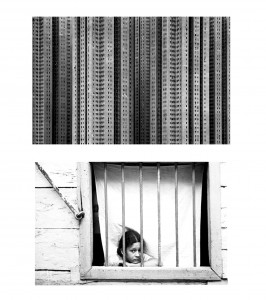As in the seventeenth century Galileo wrote “The Book of Nature is written in characters of Geometry“, so the Scottish biologist D’Ancy W. Thompson, almost four centuries later, undertook a study focused on the use of mathematics to describe what is still a recurring theme: the “evolution”. He pushed himself to the limits of research with the ambition to find a “scheme” of Nature (“On Growth and Form” published on 1917).
The chapter in point is “Comparison of the related Forms“, where Thompson, inspired by the work of the artist Albrecht Dürer, explores the degree to which differences in the forms of related animals could be described by means of relatively simple mathematical transformation.
After fixing (drawn) on a classical cartesian plane his study models (bones, skulls, fishes), he proceeded with linear transformations and affine transformations, rotations, reflections and translations, which were going to change the design of the basic model in a new design attributable to a different characteristics model, but of the same biological “family” (i.e. from the cannon-bone of ox to a cannon-bone of sheep).
Doing so he reported four different methods of deformation of the cartesian plane: transformation with linear function; logarithmic increase; when the rectangular coordinates become “oblique” and their axes have a Certain angle “w” and transformation to radial coordinates with one focus point.
Concisely, starting from a rigid mathematical and geometrical view, the biologist investigated new meanings of forms in nature trying to give them “mathematical names.”
As we have already seen for Rudofsky, the method of analysis and work is the same as the one used here by Thompson, ZOOM IN and ZOOM OUT, which we can compare, in affinity and practical significance, with the short film directed by Ray and Charles Eames (“Powers of Ten” – http://www.powersof10.com/film).
An holistic view is essential to issues such as Form and Nature, Science and Art, Human Being and Society.


